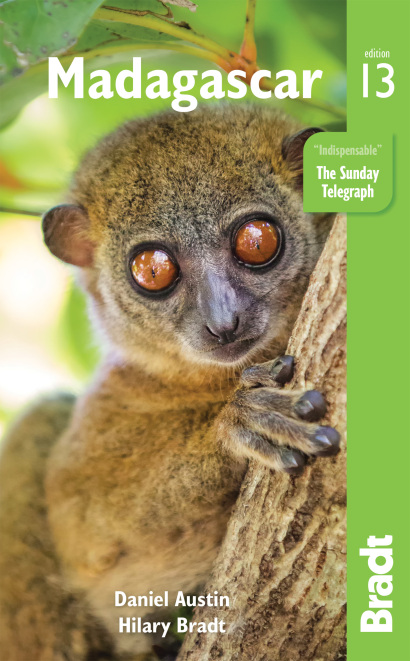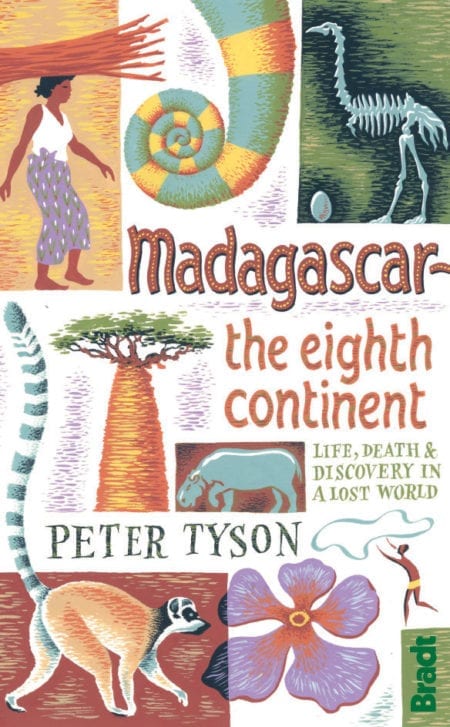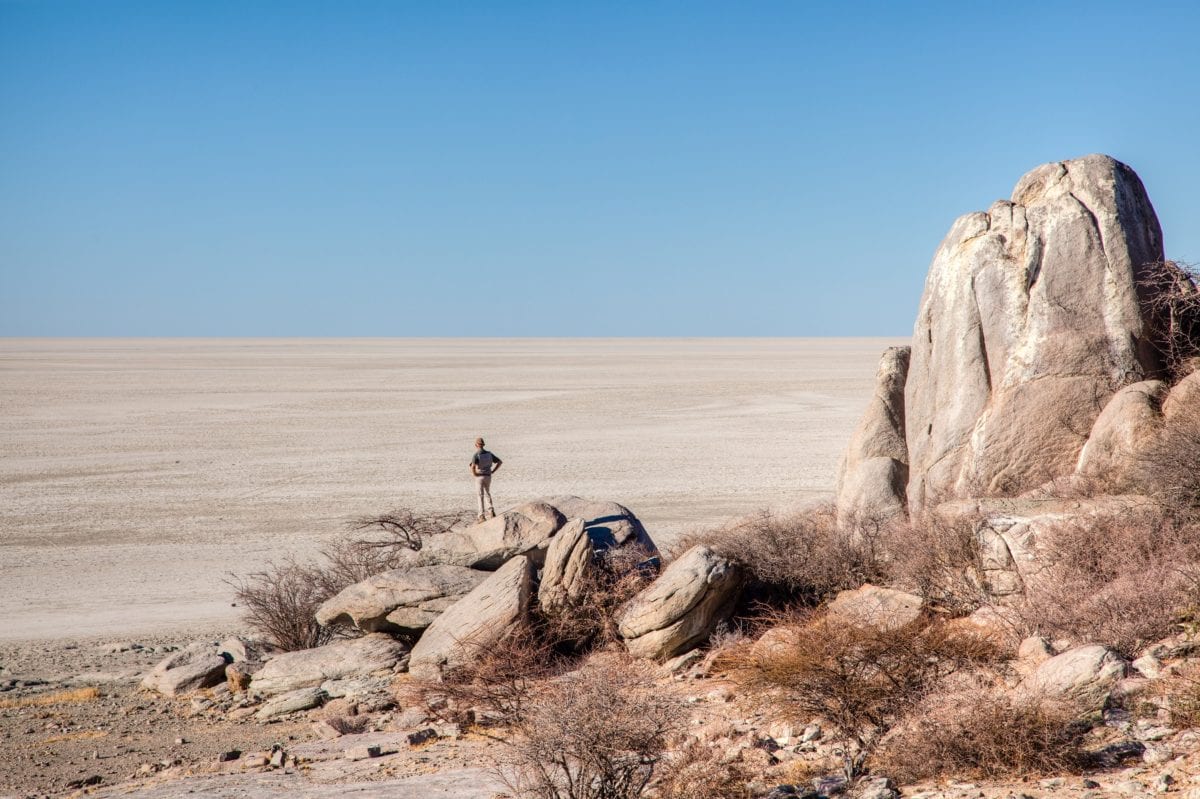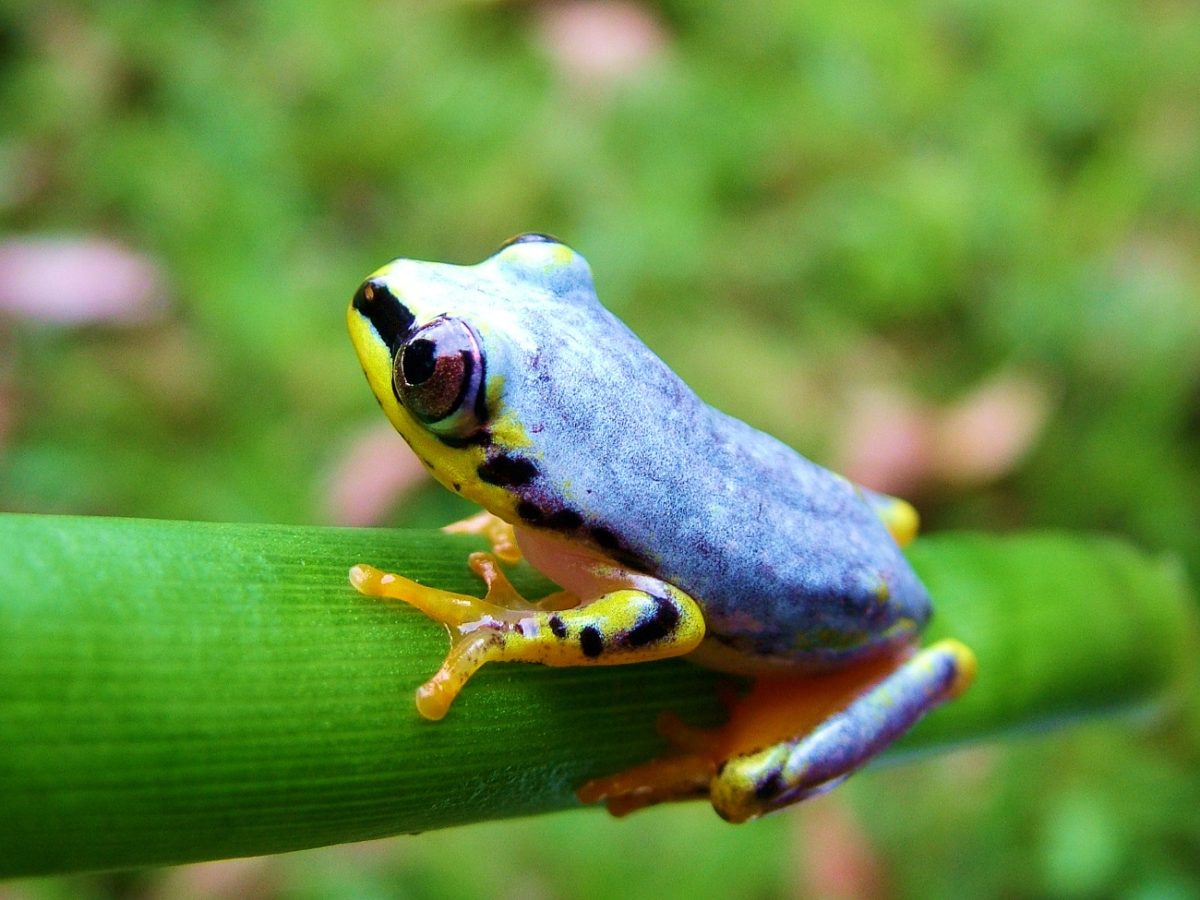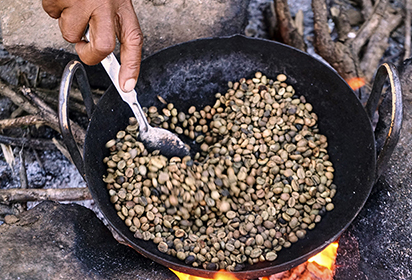It has been described as the eighth continent, a world apart, evolution’s playground, and the real Alice’s Wonderland.
Hilary Bradt & Daniel Austin , authors of Madagascar: The Bradt Guide
Madagascar is one of our hot destinations for the year ahead – check out the full list of the best places to travel in 2024 here.
Madagascar has been described as the eighth continent, a world apart, evolution’s playground, and the real Alice’s Wonderland. This otherworldly island in the Indian Ocean is the Holy Grail for many wildlife fanatics.
Leaf-tailed geckos so well camouflaged that they can be sleeping on a tree trunk right in front of your face without being spotted. More than a hundred types of lemur – not a single one found anywhere outside Madagascar – so diverse that some bound across the ground like kangaroos and some howl their eerie ‘whalesong’ from the treetops, while others winkle grubs from beneath tree bark with their bony, knitting-needle fingers. Majestic baobab trees with their elephantine trunks looking for all the world as if they’ve been planted upside-down with their stubby little roots reaching skyward. Madagascar is truly a place like no other.
But that’s only half the story; ecotourism isn’t all this destination has to offer. There are incredible deserted beaches, world-class dive sites, opportunities for all manner of other watersports from windsurfing to kite-surfing, delicious cuisine, yacht charters, and treks through startling ladscapes, not to mention the warm welcome you will receive from the ever-smiling Malagasy people.
For more information, check out our guide to Madagascar
Food and drink in Madagascar
Food
Eating well is one of the delights of Madagascar. Wherever you go you will find freshly prepared, original dishes at independent outlets and complete escape from evergrowing global homogenisation; in Antananarivo, you are nearly 1,000km from the nearest McDonald’s (Réunion) and well over 2,000km from any Starbucks (Jo’burg).
The international hotels do serve international food, usually with a French bias, but frequently offer Malagasy-inspired dishes too. Smaller hotels serve local food which is almost always excellent, particularly on the coast where lobster, crayfish, shellfish and other seafood predominates. Meat lovers will enjoy the zebu steaks. Incredible food can be found in the unlikliest of places but in remoter areas, hotels tend to offer a set menu.
Independent travellers on a tight budget will find Chinese restaurants in nearly every town; these are almost always good and reasonably priced. Soupe chinoise is available nearly everywhere, and is filling, tasty and cheap.
The Malagasy eat a lot of rice, but most restaurants also cater to foreign tastes. Away from the tourist routes, however, most dishes are accompanied by a sticky mound of rice – sometimes embellished with small stones, so chew with caution!
Local dishes
For a real Malagasy meal, eat at a hotely. These are often open-sided shacks where the menu is chalked up on a blackboard: henan-omby (beef), henan-borona/hen’akoho (chicken), henan-kisoa (pork), trondro or henan-drano/hazan-drano (fish), all served with vary (rice).
Other dishes include: tsaramaso (rice with beans and pork), vary sosoa (rice pudding/porridge), mofo boule or mofogasy (doughnut-like bread rolls made from rice), and koba (rice ground with peanuts and banana, wrapped in a banana leaf and served in slices). Along with the meat or fish and inevitable mound of rice comes a bowl of stock. This is spooned over the rice or drunk as a soup.
Thirst is quenched with ranovola obtained by boiling water in the pan in which the rice was cooked. It has a slight flavour of burnt rice, and since it has been boiled for several minutes it is safe to drink.
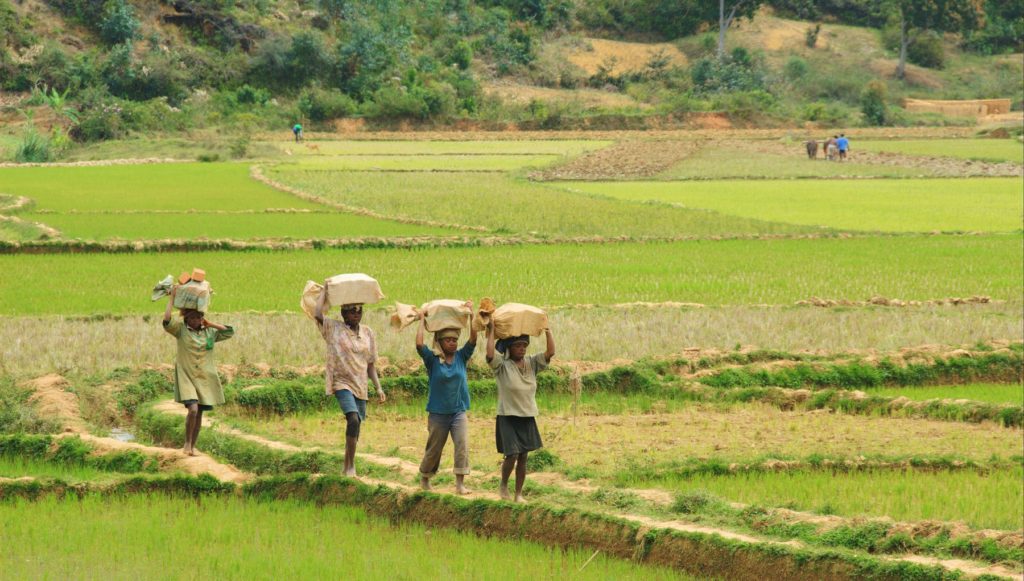
For do-it-yourself meals there is a great variety of fruit and vegetables, even in the smallest market. A selection of fruit is served in most restaurants, along with raw vegetables or crudités. From June to August the fruit is mostly limited to citrus and bananas, but from September there are also strawberries, mangoes, lychees, pineapples and loquats. As an extra special treat you may come across mangosteen. Slices of coconut are sold everywhere, but especially on the coast where coconut milk is a popular and safe drink, and toffee-coconut nibbles are sold on the street, often wrapped in paper from school exercise books. There are some good, locally produced cheeses and Malagasy yoghurt is excellent and available in even the smallest shops. Chocaholics should keep their eyes peeled for Chocolate Robert – available in several varieties.
Vegetarian food
Madagascar is becoming more accustomed to vazaha vegetarians. With patience you can usually order meatless dishes anywhere, even at small hotelys. The problem tends to be communicating what you do and don’t eat; once this is clear, most kitchens can offer some vegetarian options. Tsy misy hena means ‘without meat’ and tsy oman-kena aho means ‘I don’t eat meat’.
Drink
The most popular drink, Three Horses Beer, known universally as THB, is wonderful on a hot day. Or a cold day, for that matter. Star Brewery also produces THB Fresh, a light shandy. Ambatolampy-based Skol produces the eponymous Skol, as well as Libertalia Original, Phoenix, a THB Fresh equivalent called Skol Panache and – as of 2013 – Guinness too. Castel Beer is now also widely available.
It is not well known in the rest of the world that Madagascar produces wine. It is not world class, but some is very pleasant. A rather nice aperitif is Maromby (the name means ‘many zebu’) and Litchel, made from lychees, is good. Based in Nosy Be, the Vidzar company has made rum since 1982; their premium products under the Dzama brand have won awards worldwide.
Fermented sugarcane juice, betsabetsa (east coast), or fermented coconut milk, trembo (north), make a change. Rhum arrangé – rum flavoured with various fruits or spices – is found in most locally run hotels. The best cocktail is punch coco, with a coconut milk base, a speciality of the coastal areas.
The most popular mineral water is called Eau Vive, but other brands are available. Soft drinks including Coca-Cola, Sprite and Fanta are also available as well as a ginger beer marketed under the name Stoney Ginger.
Malagasy coffee is all right if taken black, but often only condensed milk is available.The locally grown tea is available in both green and black, the best quality being reserved for export. A nice alternative is thé citronelle – lemongrass tea.
Health and safety in Madagascar
Health
Sensible preparation will go a long way to ensuring your trip goes smoothly, so make sure all your immunisations are up to date. A yellow fever certificate is required from travellers coming from yellow fever areas, but there is no risk from the disease in Madagascar itself. Make sure you also have insurance covering the cost of helicopter evacuation and treatment in Réunion or Nairobi, which offer more sophisticated medical facilities than are available in Madagascar.
The biggest health threat is malaria and while there is no vaccine against this dangerous mosquito-borne disease, malarone, mefloquine (Lariam) and doxycycline are reasonably effective preventative drugs against the strains found in Madagascar. Madagascar is also classified as a high-risk country for rabies, so vaccination is advisable, which involves three doses taken over a minimum of 21 days. This is particularly important if you intend to have contact with animals, or are likely to be 24 hours away from medical help.
Anybody travelling away from major centres should carry a personal first aid kit. Contents might include a good drying antiseptic (eg: iodine or potassium permanganate), Band-Aids, aspirin or paracetamol, antifungal cream (eg: Canesten), ciprofloxacin or norfloxacin (for severe diarrhoea), antibiotic eye drops, tweezers, a digital thermometer and a needle-and-syringe kit with an accompanying letter from a healthcare professional. Also remember your suncream, insect repellent, mosquito net, anti-malarial prophylaxis and contraceptives, as appropriate.
Malaria prevention
Tablets do not give complete protection from malaria (though it will give you time to get treatment if it does break through) and there are other insect-borne diseases in Madagascar so it is important to protect yourself from being bitten. The Anopheles mosquitoes that spread malaria usually bite from dusk to dawn, so it is wise to dress in long trousers and longsleeved shirts, and to cover exposed skin with insect repellent especially in the evenings. In most countries, malaria transmission is rare in urban environments, but it does occur around Antananarivo because rice fields are so close to the city. Most hotels have screened windows or provide mosquito nets, but bring your own freshly impregnated net if staying in cheap hotels. Check the walls of your room for mosquitoes at bedtime and consider burning mosquito coils overnight.
The symptoms are fevers, chills, joint pain, headache and sometimes diarrhoea – in other words the symptoms of many illnesses including flu. Malaria can take as little as seven days to develop but consult a doctor if you develop a flu-like illness within a year of leaving a malarial region. The life-threatening complication of cerebral malaria will become apparent within three months and can kill within 24 hours of the first symptoms (extreme shaking, fever and sweating; seizures; impaired consciousness; and neurological abnormalities).
Travel clinics and health information
A full list of current travel clinic websites worldwide is available on www.istm.org. For other journey preparation information, consult www.travelhealthpro.org.uk (UK) or http://wwwnc.cdc.gov/travel/ (US). Information about various medications may be found on www.netdoctor.co.uk/travel. All advice found online should be used in conjunction with expert advice received prior to or during travel.
Safety
Before launching into a discussion on crime, it’s worth reminding that by far the most common cause of death or injury while on holiday is the same as at home: road accidents. Violence is rare in Madagascar and most visitors return home after a crime-free trip, with fond memories of touchingly honest locals. But this is one area where being forewarned is forearmed: there are positive steps that you can take to keep yourself and your possessions safe.
Tips for avoiding robbery
- Remember that most theft occurs in the street not in hotels; leave your valuables hidden in a locked bag in your room or in the hotel safe.
- If you use a hotel safe at reception, make sure your money is in a sealed envelope that cannot be opened without detection. There have been cases of the key being accessible to all hotel employees, with predictable results.
- If staying in budget hotels bring a rubber wedge to keep your door closed at night. If you can’t secure the window put something on the sill which will fall with a clatter if someone tries to enter.
- Carry cash in a moneybelt, neck pouch or deep pocket. Wear loose trousers with zipped pockets. Keep emergency cash (dollars/euros) in a very safe place. Keep a small amount of cash in a wallet that you can give away if threatened.
- Divide up cash and cards so they are not all in one place. Keep photocopies of important documents in your luggage.
- Remember, what the thief would most like to get hold of is money. Do not leave it around (in coat pockets hanging in your room, in your hand while you concentrate on something else, in an accessible pocket while strolling.
- In a restaurant never hang your bag on the back of a chair or lay it by your feet (unless you put your chair leg over the strap).
- For thieves, the next best thing after money is clothes. Avoid leaving them on the beach while you go swimming (in tourist areas) and never leave swimsuits or washing to dry outside your room near a public area.
- Bear in mind that it’s impossible to run carrying a large piece of luggage. Items hidden at the bottom of your heaviest bag will be safe from a grab-and-run thief. Pass a piece of cord through the handles of multiple bags to make them one unstealable unit when waiting at an airport or taxi-brousse station.
- Avoid misunderstandings – genuine or contrived – by agreeing on the price of a service before you set out.
…and what to do if you are robbed
- Have a little cry and then go to the police. They will write down all the details then send you to the chief of police for a signature. It takes the best part of a day, and will remind you what a manual typewriter looks like, but you will need the certificate for your insurance. If you are in a rural area, the local authorities will do a declaration of loss.
Female travellers
Foreign ladies travelling without male company are likely to encounter a few local men who think it’s worth trying their luck. A firm refusal is usually sufficient. Try not to be too offended; think of the image of Western women that the average Malagasy male is shown via the cinema or TV. A woman Peace Corps volunteer gives the following advice for women travelling alone on taxi-brousses: ‘try to sit in the cab, but not next to the driver; if possible sit with another woman; if in the main body of the vehicle, establish contact with an older person, man or woman, who will then tend to look after you’. Common advice is to wear a ring and say you are married, which most readers report to be effective in Madagascar, although reader Phoebe Mottram notes that most men are undeterred if you say you have a husband who is back home. Her advice is to perfect your story in advance, for example that your husband works in Madagascar and you are just on your way to meet him. She adds that being young, female and alone worked in her favour in the vast majority of situations, as locals would be less wary of making friendly contact and more willing to look out for you and make sure you are all right.
Travelling with a disability
It is not easy to find disabled-friendly accommodation in Madagascar. An increasing number of the higher-end hotels are beginning to offer one or more ‘accessible rooms’ but what they mean by this varies widely as there is no effective Malagasy legislation that sets a standard.
At airports, there should always be help available, including wheelchairs, but if you cannot walk at all you may need to be manhandled – without an aisle chair – to and from the aircraft. Public transport is generally very crowded with no concessions to disabled travellers so, in general, a hire car would be preferable. Keep in mind that distances are great and roads often bumpy, so if you are prone to spin damage you need to take extra care. Everywhere in Madagascar, pavements are frequently unsurfaced or uneven, steps often irregular, and open drains are not uncommon, so wheelchair users and visually impaired travellers need to be aware of these challenges.
Although the majority of Madagascar’s wildlife highlights are not disabled friendly, there are two outstanding exceptions. The luxurious Anjajavy resort has villas, of which one is officially accessible and Berenty has broad, smooth, well-maintained forest paths. The ideal route for a disabled traveller would be RN7 from Antananarivo to Toliara by hired car and driver.
Travelling with children
The Malagasy people are very child-friendly although facilities typically are not. Travelling with children in Madagascar should not be undertaken lightly, but with the right preparation it can be a fun and rewarding experience.
High chairs and cots are generally only found in top-end establishments and not commonly outside of the capital. But you will always find staff to be accommodating – offering to store baby formula in the chef ’s fridge or helping to organise a babysitter.
If you’ll be walking in national parks, it is useful to have some means of carrying young children when they get tired. ‘Even in towns, strollers are almost entirely useless – much better to invest in a good kid carrier/backpack to tote your little one around the island. And if you plan to travel by car, you will want to bring a car seat’ (Kyle & Monika Lussier).
LGBTQ+ travellers
Madagascar is one of the few African countries where homosexuality is not a crime, although the age of consent is higher: 21 (as opposed to 14 for heterosexual sex). There is general societal discrimination – and no laws prohibiting such discrimination – but travellers are unlikely to suffer open hostility. Public displays of affection are nevertheless best avoided.
Travel and visas in Madagascar
Visas
A visa is required by all foreign tourists and is easy to obtain at the airport on arrival, although if you prefer you can get it in advance of your trip at the Malagasy embassy in your country (this option may be more expensive).
There are three categories: up to 30 days, 31–60 days and 61–90 days, payable in cash in euros, dollars or ariary. Fees are fixed in ariary so the foreign currency amounts may vary with exchange rate fluctuations. Extension of a 90-day visa is not possible under normal circumstances, but if you exit (to Mauritius or Réunion, say) you can come back immediately and get a fresh 90-day visa on your return.
Getting there and away
By air
It can be cheaper to book through an agency or flight metasearch site such as Skyscanner or Expedia rather than contacting airlines directly. There are no direct flights to Madagascar from the UK. Air France flies from several UK cities via Paris three times a week. Kenya Airways is generally a cheaper option with flights from London Heathrow via Nairobi most days, but sometimes with long connections.
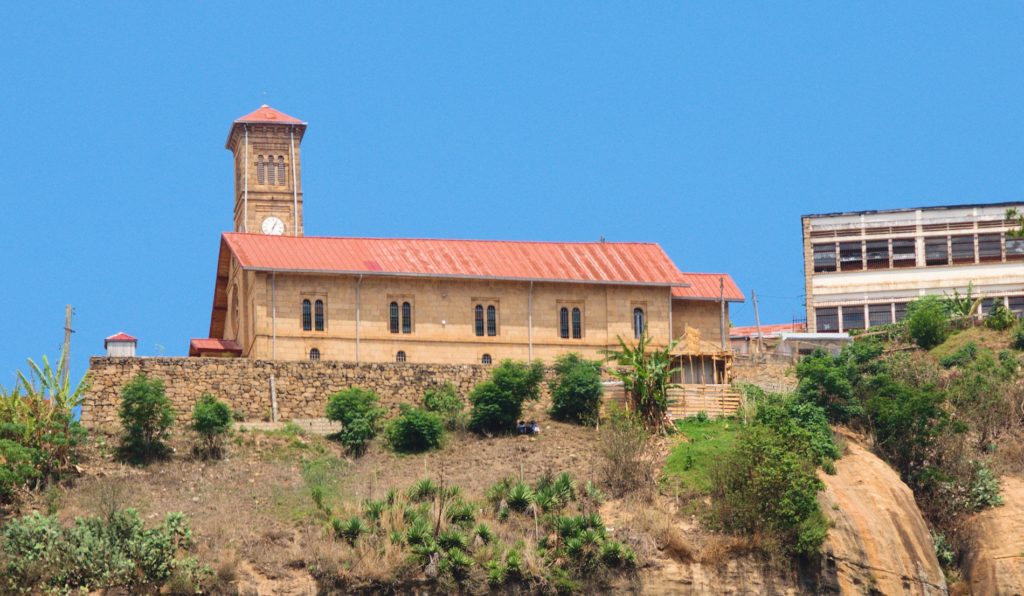
As of 2015, the multiaward-winning Turkish Airlines offers a comfortable alternative route from various points in the UK via Istanbul four times a week at surprisingly competitive rates, but note that the plane makes a brief stop in Mauritius before reaching Tana.
By sea
The Mauritius Trochetia has passenger cabins and sometimes plies the Toamasina–Mauritius route via Réunion (4 days); contact Mauritius Shipping for details. There are no passenger boats crossing the Mozambique Channel to Madagascar, but many people sail their own yachts from Durban. It takes six or seven days to reach Anakao.
Getting around
By road
Coping with the ‘roads’ is one of the great travel challenges in Madagascar. Torrential rain and cyclones destroy roads almost as fast as they are constructed. Taxi-brousse is the generic name for public transport in Madagascar. Car-brousse, camion-brousse, taxi-be and kat-kat are also used, but they all refer to the ‘bush- taxis’ which run along virtually every road in the country. These have improved a lot in recent years, especially along tourist routes.
Taxi-brousse
If you’re prepared for the realities, an overland journey can be very enjoyable and gives you a chance to get to know the Malagasy. Taxi-brousses are generally minibuses with about 14 seats, which operate on all roads that are in good enough condition.
Vehicles typically leave from the bus station on the side of town closest to their destination. You should try to go there a day or two ahead of your planned departure to check times and prices, and reserve a seat. Buy from a kiosk, not a middleman, and make sure you get a receipt. You should only have to pay half the fare as a deposit. Come prepared for a long wait. Taxi-brousses do sometimes leave on time, but as they never depart until they are full it can be hours before you set off.
Pousse-pousses (rickshaws)
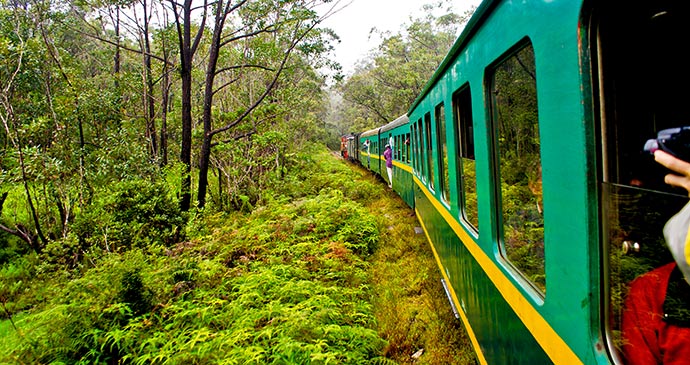
Pousse-pousses were introduced into Madagascar by British missionaries who wanted to replace the traditional palanquin due to its association with slavery. The name is said to originate from the time they operated in the capital and needed an additional man behind to push up the steep hills. They are now a Madagascar speciality and are mostly pulled by a running man, although cyclo-pousses (pedal rickshaws) have been introduced to Toamasina.
Many Western visitors are reluctant to sit in comfort behind a running, ragged, sweating man and no-one with a heart can fail to feel compassion for the pousse-pousse pullers. However, this is a case of needing to abandon our own cultural hang-ups. These men want work. Bargain hard (before you get in) and make sure you have the exact money.
Car hire
Generally cars come with chauffeurs (providing a local person with a job and you with a guide/interpreter); self-driving is rare and generally more expensive. A few days on Madagascar’s roads will cure you of any regret that you are not driving yourself. A few agencies do rent vehicles without drivers.
Adventurous souls who are tempted by this must be sure to check the vehicle over thoroughly before departure, get as much information about the intended route as possible (including where the fuel stops are), and avoid driving after dark at all costs. Hire prices including fuel and driver are around €85 per day for a saloon car or €120 for a 4×4. Taxi drivers will often agree to a full-day hire for around €60.
By air
Air Madagascar started its life in 1962 as Madair, a name that was so mocked that they changed it within a year. Although their operations have recently reached a state of such disarray that a reversion to their original name might seem appropriate. Since 2011, last-minute time changes and cancellations have become not just commonplace but almost normal on domestic routes; one traveller reported that of 12 domestic flights he booked over a six-month period, only two went ahead at the expected time.
Given their unreliability, it is inadvisable to arrange any travel itinerary that relies on a domestic flight departing on time, without any contingency plan. Flights which are said to be fully booked at the office may in fact have empty seats, so it can be worth going to the airport well in advance, where empty seats are filled on a first-come-first-served basis. Conversely, passengers who check in late may find their seats resold, so always arrive in good time.
In 2015, a new airline called Madagasikara Airways launched. They currently have just a single 30-seat Embraer aircraft, operating 25–30 flights per week to nine destinations across the island, but have plans to expand their fleet soon. The current typical cost of flying from the capital to one of the country’s other major airports (one way) is about €250.
By boat
The Malagasy are traditionally a seafaring people and, in the absence of roads, their stable outrigger canoes are used to cover quite long sea distances. Pirogues without outriggers are used extensively on the rivers and canals of the watery east.
Quite a few adventurous travellers use pirogues for sections of their journeys. Romantic though it may be to sail in an outrigger canoe, it can be both uncomfortable and, at times, dangerous. Ferries and cargo boats known as boutres travel to the larger islands and down the west coast. River journeys are popular as a different way of seeing the country.
By rail
After years of deterioration, Madagascar’s rail system has seen improvement over the past decade. Passenger services now run a few times a week between Fianarantsoa and Manakara and between Moramanga and Toamasina.
When to visit Madagascar
Broadly speaking, the dry months are in the winter between April and September, but rainfall varies enormously in different areas. Try to avoid July/August and the Christmas/New Year period when popular places are crowded. January to March is the rainy season when some more remote places get cut off by the swollen rivers,
particularly in the north and west. However, the off-peak season can be rewarding, with cheaper international airfares and accommodation and fewer other tourists.
September is nice, but frequently windy in the south. April and May often have lovely weather, and the countryside is green after the rainy season. Keen naturalists have their own requirements: botanists may want to go in February when many of the orchids are in flower, and herpetologists will prefer the spring/summer because reptiles are more active – and brightly coloured – during those months. Bear in mind that giant jumping rats, dwarf lemurs, tenrecs and some reptiles are less active and so harder to see during the cool dry months of June to September. Our favourite months to visit Madagascar are October and November, when the weather is usually fine but not too hot, the jacarandas are in flower, the lemurs have babies, and lychees are sold from roadside stalls in the east.
Climate
Madagascar has a tropical climate: November to March (summer/wet season) is hot with variable rainfall; April to October (winter/dry season) is mainly dry and mild. That said, global climate change is making Madagascar’s weather patterns less predictable.
Typically, southwest trade winds drop their moisture on the eastern mountain slopes and blow hot and dry in the west. North and northwest ‘monsoon’ air currents bring heavy rain in summer, decreasing southward so that the rainfall in Taolagnaro is half that of Toamasina. There are also considerable variations of temperature dictated by altitude and latitude. On the summer solstice of 22 December the sun is directly over the Tropic of Capricorn, and the weather is very warm. June is the coolest month.
Average midday temperatures in the dry season are 25ºC (77°F) in the highlands and 30ºC (86°F) on the coast. These statistics are misleading, however, since in June the night-time temperature can drop to near freezing in the highlands and it is cool in the south. The winter daytime temperatures are very pleasant, and the hot summer season is usually tempered by cool breezes on the coast.
Madagascar frequently suffers from cyclones, especially during February and March, and primarily down the east coast.
Festivals and events
March: Nosy Be Trail
For serious runners, March is the time to visit Madagascar. Starting from 2014, the island of Nosy Be hosts a 65km ultramarathon (with a 35km option for the mere mortals among us) organised by RandoRun Océan Indien.
July: Turning of the Bones
Exhumation ceremonies called famadihana or the ‘Turning of the Bones’ are carried out between July and September. These traditional rites are practiced by highland tribes and involve great ceremonies in which families gather to remove the body of a loved one from the family tomb, rewrap them in fresh cloth, then dance and parade around carrying the corpse aloft while live music is played.
Itineraries
For more itineraries, please see the listing of Madagascar holidays on SafariBookings. This comparison website lists tours offered by both local and international tour operators.
What to see and do in Madagascar
Masoala
Masoala (pronounced ‘mashwahl’) is one of the largest and most diverse areas of virgin rainforest in Madagascar. The peninsula’s importance was recognised by the French back in 1927 when they created a small reserve there, but independent Madagascar was swift to remove the protection in 1964. However, in 1997 most of the peninsula (240,000ha) was declared a national park, and later three marine sections were added.
Despite difficulty of access and dodgy weather, this area is perhaps the leading destination for ecotourists who want to see the country’s most important natural habitat in terms of biodiversity – the eastern rainforest, exemplified by Nosy Mangabe and the Masoala-Makira rainforest belt.
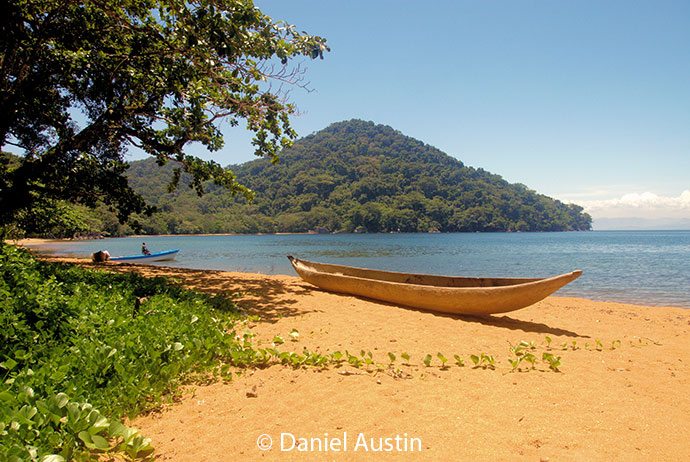
These places require fitness and fortitude but the rewards for nature lovers are great. Fitness is needed for the hills and mud which are an aspect of all the reserves, and fortitude because this is the wettest place in Madagascar, with annual rainfall exceeding 500cm. The driest months tend to be November and December. Switzerland’s Zoo Zürich has established a link with Masoala and finances development projects to encourage conservation. Their Masoala Kely exhibit – an 11,000m2 indoor replica rainforest at their Zürich zoo – is well worth visiting.
Visitors should be warned that logging and clearance for agriculture still persist and maps of the peninsula tend to look deceptively green. That said, there are still large expanses of virgin forest along with stunning beaches of golden sand dotted with eroded rocks. Some parts of the peninsula, seen on a sunny day, can arguably be described as the most beautiful in Madagascar.
The wildlife is equally stunning. You will need to work for it, but nevertheless the opportunity to see the red ruffed lemur in its only habitat, helmet and Bernier’s vangas, scaly ground-roller and other rare endemic birds plus a host of reptiles and invertebrates is not to be missed.
Montagne d’Ambre National Park
The 18,500ha Montagne d’Ambre National Park was created in 1958, the French colonial government recognising the unique nature of the volcanic massif and its forest. The park is part of the Montagne d’Ambre Reserves Complex which also includes Ankarana, Analamera and Forêt d’Ambre. The project was the first to involve local people in all stages of planning and management. The aims of conservation, rural development and education have largely been achieved. Ecotourism has been encouraged successfully with good information and facilities now available.
Montagne d’Ambre National Park is a splendid example of montane rainforest: the massif ranges in altitude from 850m to 1,475m and has its own microclimate with rainfall similar to the eastern region. It is one of the most visitor-friendly of Madagascar’s protected areas, with broad trails, fascinating flora and fauna, a comfortable climate and readily available information. In the dry season vehicles can drive right up to the main picnic area, giving a unique opportunity (in Madagascar) for elderly or disabled visitors to see the rainforest and its inhabitants.
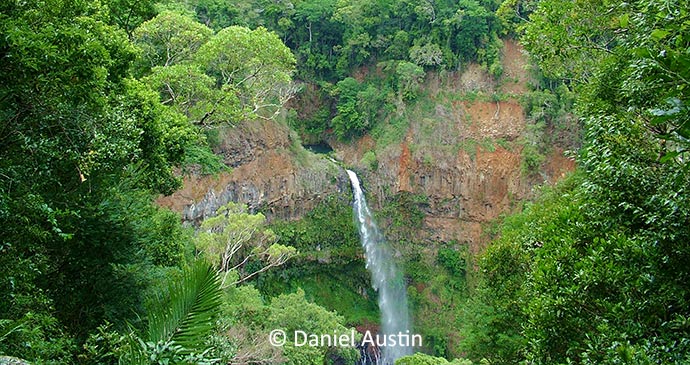
The most rewarding time to visit is during the warm season (September to November); there will be some rain, but most animals are active and the lemurs have babies. It is usually relatively dry from May to August, and wettest from December to April. Temperatures on the mountain are much cooler than down in Antsiranana and there is a strong wind – varatraza – most days so it can feel quite cold. It is often wet and muddy (and there may be leeches) so be wary of wearing shorts and sandals, however hot and dry you feel at sea level. Bring waterproofs, insect repellent and even a light sweater.
You should also be aware that, as Antsiranana is on the itinerary of some cruise ships, for three or four days each year the park is inundated with hundreds of day trippers.
Nosy Be
The name means ‘big island’ and is pronounced ‘nossy bay’ by the local Sakalava people, although ‘nooss bay’ is nearer the highland pronunciation. It is blessed with an almost perfect climate for much of the year. Fertile and prosperous, with the heady scent of ylang-ylang blossoms giving it the tourist-brochure name of ‘Perfumed Isle’, this is the place to come for a rest – providing you can afford it. Compared with the rest of Madagascar, Nosy Be is expensive.
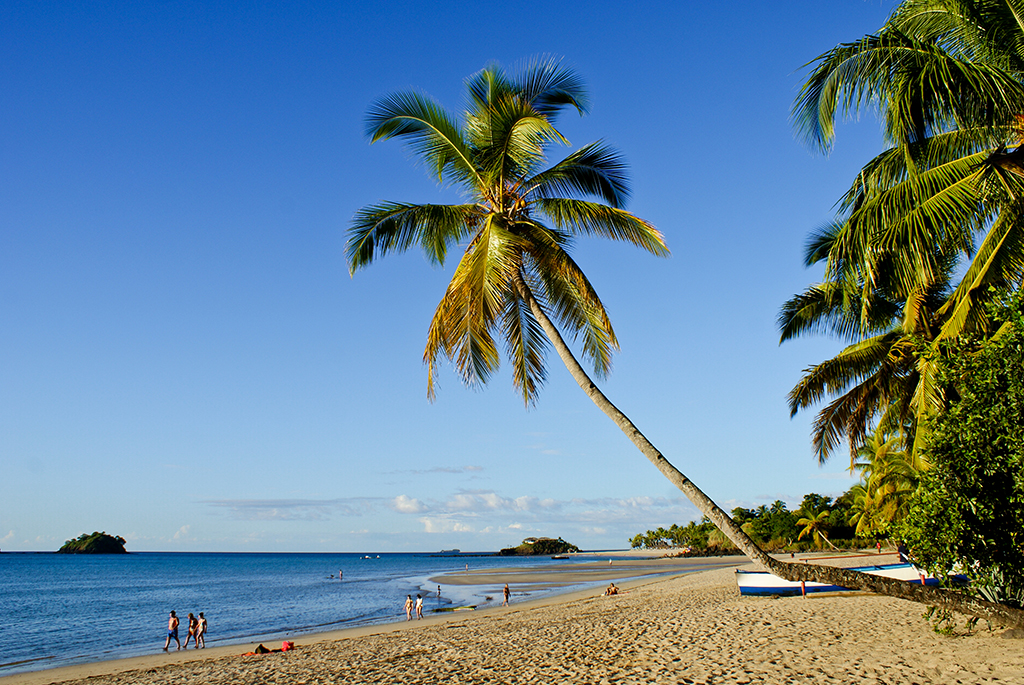
Tourism developed here long before the mainland, so inevitably the island seems touristy to adventurous travellers. Since the demise of the sugar industry, all available land is being bought up for hotel development, pushing prices ever higher. That said, Nosy Be has much to offer – from good seafood and beaches to scuba-diving and boat trips. It also has many more luxury hotel options than in the rest of Madagascar, and a significantly higher proportion of Italian-owned ones.
The only significant town is Hell-Ville, which is where the ferry port is as well as such services as banks and airline offices. It has some basic accommodation but no beach; most tourists will want to stay at the better hotels stretching along the west coast. The beachfront village of Ambatoloaka in the southwest comprises a couple of dozen hotels and restaurants, so this is the place to stay if you want to be within walking distance of eateries and nightlife.
Heading north, the hotels become progressively more isolated and the beaches better. For an even more exclusive experience, consider staying on one of the islets surrounding Nosy Be.
Nosy Mangabe
In fine weather the island of Nosy Mangabe is superb. This 520ha special reserve has beautiful sandy coves, marvellous trees with huge buttress roots and also strangler figs. And it’s bursting with wildlife including, of course, its famous aye-ayes which were released here in the 1960s to prevent what was then thought to be their imminent extinction.
There is plenty of other wildlife to see so, while a day visit is quite possible, a couple of nights’ stay is recommended. Inhabiting the island are weird-and-wonderful leaf-tailed geckos, green-backed mantella frogs, stump-tailed chameleons, white-fronted brown lemurs and black-and-white ruffed lemurs. The bay offers excellent swimming and you may see dolphins and turtles enjoying it too. Aye-aye sightings are rare and in any case night walks are forbidden nowadays.
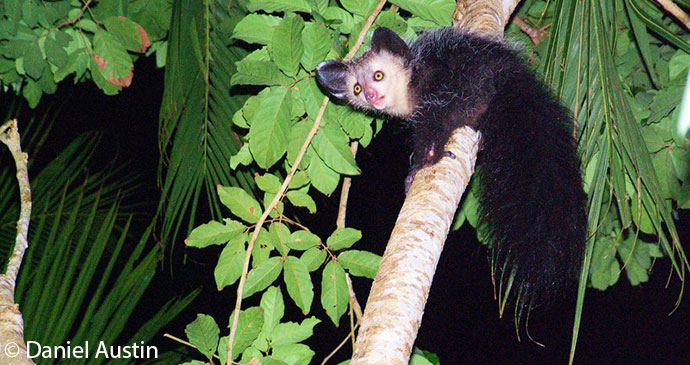
The circuits are well maintained and range in difficulty from easy to moderate. In rain – and it rains often – the paths can get slippery. Trails lead variously to the 332m summit, a rather rusty old lighthouse, and the Plage des Hollandais with its fascinating 17th-century Dutch inscriptions carved on the rocks (if you don’t get time to do this last trail, ask your boatman to stop by there when you leave).
As the whole island is a protected area, there are no hotels on Nosy Mangabe, but the reserve runs a campsite with sheltered pitches, showers, flush toilets, and a couple of newly constructed huts for those without tents. Permits are available from the park office on the island itself. If staying overnight, you are expected to provide or pay for your guide’s food. For your own meals, you can bring a camp stove or employ the services of a cook (some guides will double as cooks if you pay them a little extra).
Andasibe-Mantadia National Park
In the late 1990s the long-established reserve of Analamazaotra Forest, sometimes known by its colonial name of Périnet, was combined with Mantadia, 20km to the north, to form Andasibe-Mantadia National Park. Because of its proximity to Tana and its exceptional fauna, this is now one of Madagascar’s most popular reserves. These two areas of moist montane forest (altitude: 930–1,049m) are home to a variety of lemurs, birds, reptiles and invertebrates.
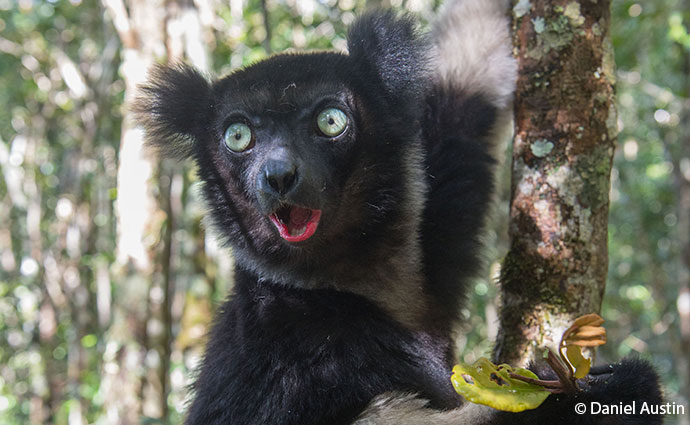
This reserve protects the largest of the lemurs, the indri. Standing about a metre high, with a barely visible tail, black-and-white markings and a surprised teddy-bear face, the indri looks more like a gone-wrong panda than a lemur. It is the voice that makes this lemur extra-special: while other lemurs grunt or swear, the indri sings. It is an eerie, wailing sound – a cross between whale song and a siren – and it carries for up to 3km as troops call to each other across the forest.
There are 11 species of lemur altogether in Andasibe, although you will not see them all. You may find grey bamboo lemurs, common brown lemurs and perhaps a sleeping avahi (woolly lemur) curled up in the fork of a tree. Diademed sifakas and black-and-white ruffed lemurs have been translocated here from Mantadia and from forest cleared to make way for the Ambatovy nickel and cobalt mine.
Although the vast majority of visitors spend one or two nights here it is just possible to visit Andasibe as a long day trip from Tana. You will need to leave before dawn to have much chance of seeing and hearing the indri.
Anjajavy
Located 128km up the coast from Mahajanga, this is not just a luxury seaside hotel: in addition to its 24 villas it protects 450ha of dry deciduous forest. In some places this grows right on the tsingy limestone.
Wildlife viewing here is effortless, including Coquerel’s sifakas and other lemurs. There are flocks of bright green grey-headed lovebirds, sickle-billed vangas, crested ibises, crested couas, Madagascar fish eagles and vasa parrots. You may also see beautiful butterflies, plentiful chameleons, hognose snakes and ground boas.
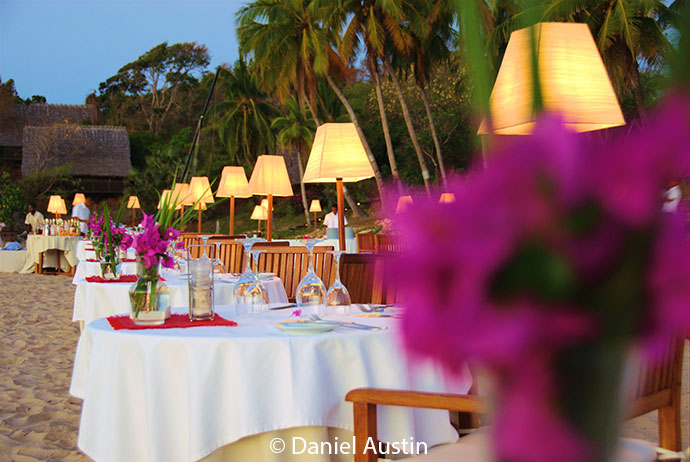
There’s a couple of caves too, spectacular enough with stalactites and stalagmites (and bats), and one with the skulls of an extinct lemur species embedded in the rocks. Perhaps most startlingly for botanists, Anjajavy and the nearby Moramba Bay hold an undescribed species of cycad tree.
Then there are the coral reefs, tsingy, pristine beaches, extensive mangroves, lovely swimming pool and ‘oasis’ garden, not to mention total comfort, brilliant service and superb food. And even Wi-Fi for those unable to sever their electronic umbilical cord to the outside world.
A range of activities is on offer, including guided forest walks, sailing, windsurfing, snorkelling, mountain biking and village visits. For an additional fee you can also indulge in deep-sea fishing, waterskiing and massages. Three nights is the minimum stay; five allows you to appreciate all Anjajavy has to offer. To fit as much into a day as possible, the hotel operates in its own time zone bubble – an hour ahead of the rest of Madagascar!
Avenue des Baobabs
The baobab – a freak among trees with its massively swollen trunk and sparse stubby branches – is emblematic of Madagascar. This is the motherland of baobabs. Of the nine species found worldwide, six grow exclusively in Madagascar. It is difficult to be certain because unlike other trees baobabs do not produce growth rings, but recent radiocarbon dating suggests that the very oldest may be 900 years old, with most significantly younger.
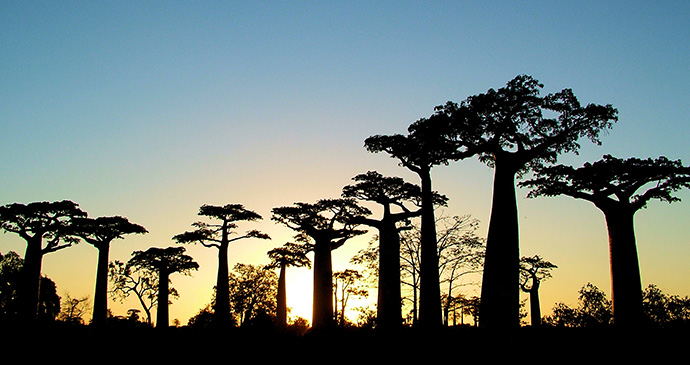
In 2007 the avenue (together with about 300 baobabs of three species in the surrounding 1km) became an officially protected natural monument. There is now a car park, fee to pay to visit, souvenir shop, information office and tree nursery, with an active programme to plant saplings among the existing trees. The project suffered a setback late in 2012 when a fire engulfed 11ha of the 320ha reserve, destroying 99 of the 220 newly planted trees, but no mature baobabs were affected.
To get to the avenue turn left off RN35 about 13km from Morondava, and the baobabs are 5.5km further on. It takes about 40 minutes by car/taxi, or you can come by bike or quad. The best light for photography is just before sunset (it brings out the red hue in the bark), but sunrise is almost as good and you’re much more likely to have the place to yourself.
Berenty Reserve
This small private reserve some 3 hours’ drive west of Taolagnaro is one of the most famous in Madagascar, not least for being the site where renowned primatologist Alison Jolly studied lemurs for five decades. It’s pricey but most visitors love it for the combination of tame lemurs, reasonably comfy accommodation, knowledgeable guides and easy forest trails.
Berenty is most famous for its lemurs; if you have ever seen these in a TV documentary, chances are they were filmed here. Brown lemurs, ring-tails and sifakas are all guaranteed sightings. There are approximately 500 ring-tailed lemurs in Berenty, and the population has stayed remarkably stable considering only a quarter of babies survive to adulthood. The females are dominant over the males and receptive to mating for only a week or so in April or May, so there is much competition among males for this once-a-year treat. The young are born in September.
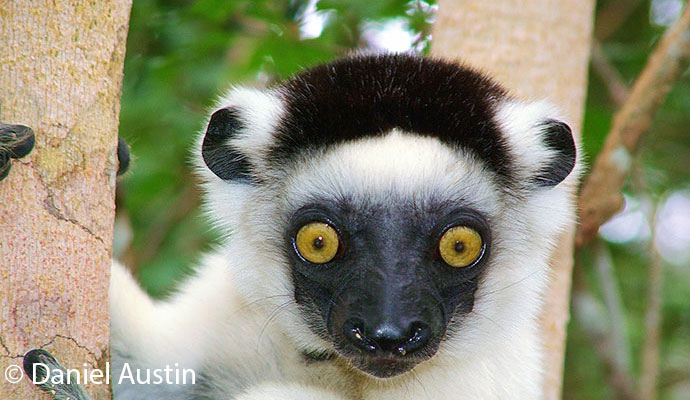
Attractive though they are, no ring-tail can compete with the Verreaux’s sifaka for soft-toy cuddliness, with its creamy white fur, brown cap, and black face. There are about 300 of them in the reserve. Unlike ring-tails, they only rarely come down to the ground but, when they do, the length of their legs in comparison with their short arms necessitates a comical form of locomotion: jumping with feet together like competitors in a sack race. The red-fronted brown lemurs were introduced from the west and are now well established and almost as tame as the ring-tails.
There are some 30 bungalows and rooms as well as a restaurant within the reserve complex. Don’t try turning up unannounced – they generally insist you use their transfers from Taolagnaro.
Île Sainte Marie
Here is a cliché of a tropical island with endless deserted beaches overhung by coconut palms, bays protected from sharks by coral reefs, hills covered with luxuriant vegetation and fantastic whale watching in season. Although Île Sainte Marie is developed for tourism, it has been done in a tasteful, low-key way and the island maintains a traditional ambience: most of the hotels are small-scale with rustic bungalows.
Travellers love it: ‘As soon as we saw the island from the air, we were ready to ditch our travel plans and spend the rest of our trip nestled in paradise. Everything about the island is intoxicating: the smell of cloves drying in the sun, the taste of coco rum and the warmth of the sea.’
The island, due east of Soanierana-Ivongo, is 50km long and 7km at its widest point, with the much smaller – but even more delightful – Île aux Nattes just off its southern tip. The only significant town is Ambodifotatra; other small villages comprise mainly bamboo and palm huts. The island is almost universally known as Île Sainte Marie – few use its Malagasy name: Nosy Boraha.
Île Sainte Marie unfortunately – or perhaps fortunately, given the dangers of overdevelopment – has a far less settled weather pattern than its island rival, Nosy Be. Cyclones cause damage every few years. At any time of year expect several days of rain and wind, but interspersed with calm sunny weather. The best months for a visit tend to be June and mid-August to December, but good weather is possible anytime.
You can find more about the best beaches in Madagascar here.
Related books
Related articles
Marble caves, salt lakes and rainbow mountains.
Travel and wildlife photographer Daniel Austin shares the stories behind his incredible shots of Madagascar’s miniature creatures
Journey back 500,000 years to discover wild coffee and join in the Malagasy coffee obsession.
